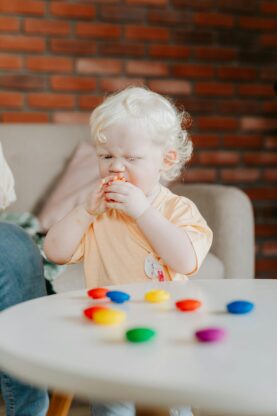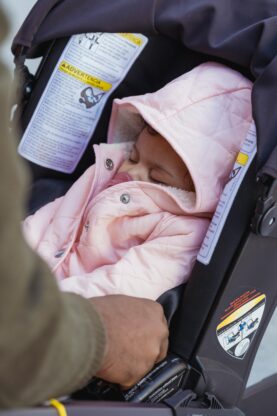Table of Contents
Kitchen Safety
The kitchen is one of the most hazardous areas for young children due to its numerous potential dangers. To effectively childproof your kitchen, start by securing cabinets and drawers that contain hazardous items such as cleaning products, sharp objects, or small items that pose choking hazards. Utilize safety locks or latches on lower cabinets, ensuring that your child cannot access harmful substances or objects.
Furthermore, it’s crucial to secure all large appliances, such as refrigerators, ovens, and dishwashers, to prevent tipping hazards. Ensure that stove knobs are out of reach, using knob covers if necessary, to prevent accidental ignition or burns. Lastly, be cautious with hot beverages by using a kettle with a cordless design and placing it out of your child’s reach.
On-Demand Childcare in Your Neighborhood
Book a Sitter
Electrical Safety
Electrical outlets and cords pose significant hazards to young children. Start by covering all unused electrical outlets with safety caps or outlet covers to prevent accidental shocks. Ensure that electrical cords are tucked away, out of reach, and not within the child’s grasp. Consider using furniture or cord covers to hide cords and prevent pulling or chewing.
In addition, it is essential to teach your child about electrical safety from an early age. Educate them about the dangers of poking objects into outlets and the importance of seeking an adult’s help when dealing with electrical devices.
Preventing Falls
Falls are a common cause of injuries among children, often resulting in broken bones, bruises, or head injuries. To minimize the risk of falls, secure windows with window guards or window stops to prevent your child from opening them too wide. Additionally, installing safety gates at the tops and bottoms of stairs can prevent falls down the stairs.

Make sure that furniture, particularly bookshelves and dressers, are securely anchored to the walls to avoid tipping accidents. Arrange furniture with sharp edges out of your child’s play area or use edge guards to minimize the risk of injuries. For added safety, consider using non-slip mats or rugs with non-slip pads to prevent slips and trips.
Bathroom Safety
The bathroom presents many potential hazards for children, including drowning, burns, and access to medications or cleaning products. Always keep the bathroom door closed and consider using a toilet lock to prevent your child from falling in or playing with the water.
To avoid burns, set your water heater to a maximum temperature of 120°F (48°C). Additionally, install anti-scald devices on faucets and showerheads to prevent accidental burns from hot water. Store medications, cleaning products, and other hazardous substances in locked cabinets out of reach of children.
Lastly, ensure that all electrical devices, such as hairdryers or electric razors, are unplugged and stored safely after use.
Poison Control
As children are naturally curious, it is crucial to keep all poisonous substances securely locked away. This includes medications, cleaning products, laundry detergents, and even certain houseplants. Ensure that all medications are stored in childproof containers and kept in a locked cabinet or in a high, inaccessible shelf.
In addition, familiarize yourself with the Poison Control Center’s contact information, which can be found on their website or saved in your phone. Being prepared to swiftly respond in case of accidental ingestion or contact with poisonous substances can make all the difference in an emergency situation.
In conclusion, childproofing your home is a crucial undertaking to safeguard your child’s well-being. By focusing on the key areas of kitchen safety, electrical safety, preventing falls, bathroom safety, and poison control, you can create a safe and secure environment for your child to explore and grow. Remember, the measures taken now can greatly reduce the risk of accidents and provide peace of mind for parents and caregivers.










